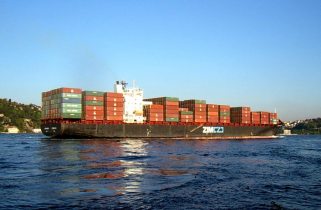 Is there a danger to the Southern California ports of Long Beach and Los Angeles?
Is there a danger to the Southern California ports of Long Beach and Los Angeles?
Some are speculating there is a danger in the form of the Panama Canal Expansion that is currently underway.
We haven’t posted for a while on the Panama Canal Expansion, but as its completion—expected toward the end of next year or early the year after—draws closer, more and more speculation is happening on how it will affect the import traffic at the Ports of Long Beach and Los Angeles.
For background on the Panama Canal Expansion, you can read our previous blogs on the topic:
The Panama Canal & International Shipping Traffic
China to Rival Panama Canal with Colombian Rail for Ocean Freight
Speculation has been rising that a significant percentage of the imports that enter North America through the West Coast and specifically Southern California will be diverted to East and Gulf Coast ports. Not surprisingly, much of this speculation comes from East and Gulf Coast Ports themselves.
By now we’re all used to reading “Made in China” on the products we see on the shelves in stores. The dominant import entrance of goods from Asia is through the Ports of Long Beach and Los Angeles. In fact, nearly 40% of U.S. imports go through the Ports of Long Beach and Los Angeles.
If the speculation is correct and a significant percentage of imports move from these West Coast ports in Southern California, there would be serious consequences for the local economy.
However, in a white paper posted on SupplyChainBrain.com, Weber Logistics strongly disagrees with this speculation.
They supply 3 strong arguments for Southern California remaining “the gateway to North America for Asian shippers”.
1. Longer Shipping Times Would Increase Supply Chain Costs
The meat behind Weber Logistics’ first point is that shipping through the Panama Canal would take up to two weeks longer than shipping to L.A. from Asia.
This added time would cause stores to need to carry larger inventories and cost up to 30% more in those inventory-carrying costs.
Shipping faster to the closer ports to Asia saves time and money. Businesses tend to like that. No one says we need to increase our overhead costs so our profit is better. Because of this, shippers are likely to continue importing from China and other Asian locations through West Coast ports.
2. Ports of Long Beach/Los Angeles are Further Developed than East Coast Ports
The Ports of Long Beach/Los Angeles simply offer more than East Coast ports including:
- Depth capable of handling the popular new “megaships” or “super vessels” carriers are putting on the ocean
- Infrastructure to handle the giant amount of volume of imported goods from Asia to the U.S.
- Effective pollution reduction measures
Ooh, was that just a list within a list? Bad form. But it doesn’t change the fact that the Ports of Long Beach and Los Angeles are way ahead of East and Gulf Coast Ports, including the Port of New York, Port of Savannah, Port of Tampa, Port of Norfolk, and Port of Baltimore in all three of these important ways.
Being ahead in these ways gives Southern California a serious competitive edge for importing and provides yet another reason shippers will keep importing and exporting cargo through the Ports of Long Beach and Los Angeles.
In fact, it will take years for East and Gulf Coast ports to catch up in these areas.
3. Switching from Importing through SoCal to Importing through the East and Gulf Coasts Involves Risk
Risk assessment is a large part of making business decisions. Switching from shipping through the Ports of Long Beach and Los Angeles to a port on the East or Gulf Coast is a risk.
It’s not simply a risk because it’s a change, but change is certainly worth bringing up.
Changing ports could mean changing a large number of logistics partners from carriers to truckers to rail, changing shipping lanes, needing new warehousing, and more.
If you ship with Universal Cargo Management, we handle imports through the West, East, and Gulf Coasts so you wouldn’t need to worry about changing logistic partners.
However, Weber Logistics does bring up other risks in their white paper like how smooth will the new canal operations be and cost changes caused by fees and rising fuel costs.
In the end, the speculation coming from the East Coast Ports that they will get a significant percentage of the imports coming to the U.S. from Asia through the Ports of Long Beach and Los Angeles seems like it might just be a little biased and hopeful.
Then again, Weber Logistics focuses on West Coast logistics for West Coast clients. So maybe there’s a little bias and hopefulness in their white paper. However, their arguments are strong and do seem both fair and accurate. I find myself agreeing with their final assessment that “The Ports of LA and Long Beach will continue to be North America’s freight gateway long after the Canal expansion is completed.”
What are your thoughts on how the Panama Canal Expansion will affect importing and exporting? Share your thoughts in the comments section below.
As always, for free freight rate pricing for your international shipping, wether through the West, East, or Gulf Coast, contact us.
